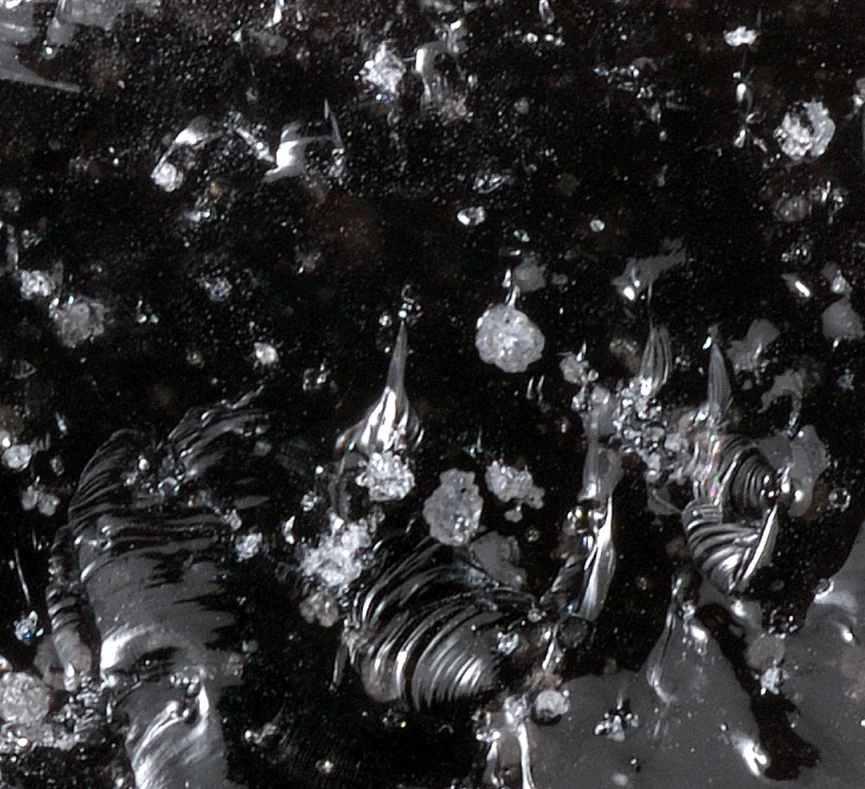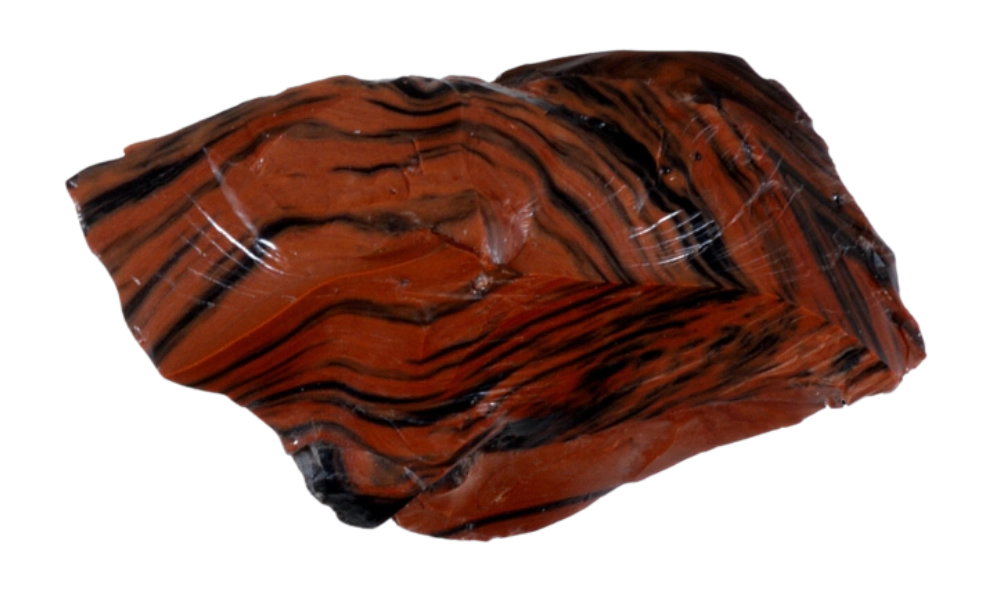The characteristics of Obsidian, glass from prehistory
But what is obsidian?
Obsidian is a rock of volcanic origin formed by the rapid cooling of lavas rich in silica and alkali, the “black paths.”
Its color varies from black to green, blue or red, with different levels of glassiness.
Obsidians have a limited geological age, not exceeding 10 million years. This is because they are subject to degradation by weathering.
Due to its unique fracture called conchoidal, obsidian has been used since Neolithic times for the production of artifacts.

The origin of the name
The earliest accounts of obsidian date back to the fifth century B.C., when the stone’s origins were thought to be mysterious. The historian Herodotus relates that in Egypt the black stone was used to eviscerate bodies before the mummification process. Theophrastus, a 4th-century B.C. philosopher, describes it as a dense black stone found in several Mediterranean locaities. The term “obsidian” seems to derive from the proper name “Obsius,” a personage recorded by Pliny as the discoverer of this rock.
Physical properties of obsidian
Obsidian is a natural glass of volcanic origin. Its hardness, according to the Mohs scale, is measured between 5 and 6, reasoning that it can be etched with a steel point and chipped with rocks such as quartz. Its predominantly black coloring is due to the presence of ferrous minerals such as magnetite, but it can vary due to oxidation processes and the presence of chemical elements that react with light, resulting in different colors such as green, red or brown.

Source area in the world
Obsidian is a mineral found all over the world, found on every continent, including Antarctica.
Since prehistoric times, it has been used to create artifacts due to its sharp edge, hardness, and beautiful iridescent surfaces. The Obsidian Museum houses specimens from various sources in Eurasia, from several locations bordering the Mediterranean, and from volcanoes in Africa and South America.

Obsidian of Armenia

